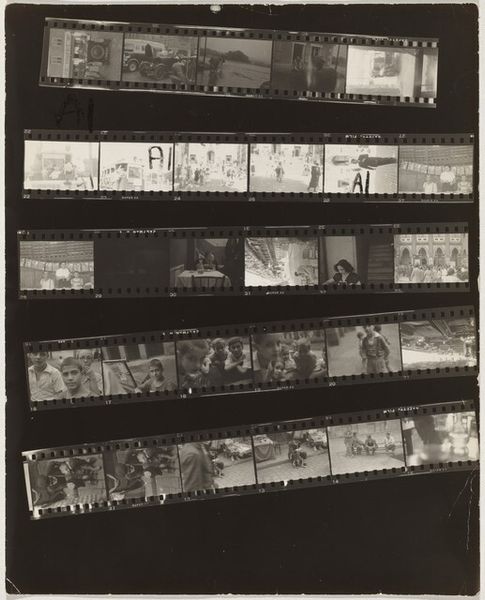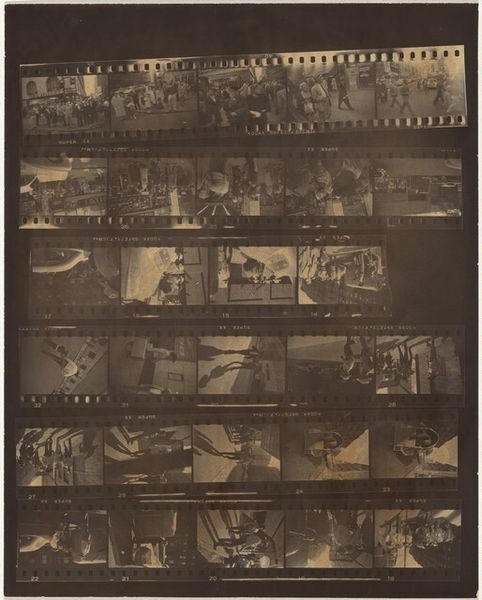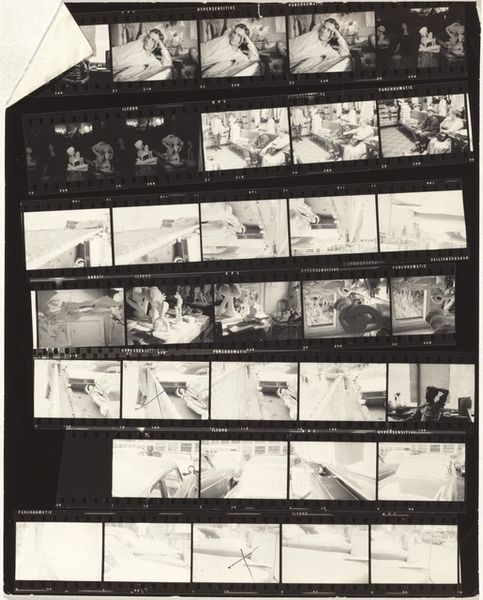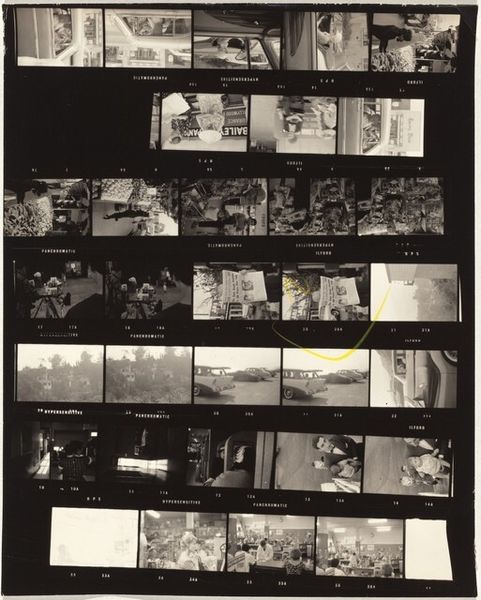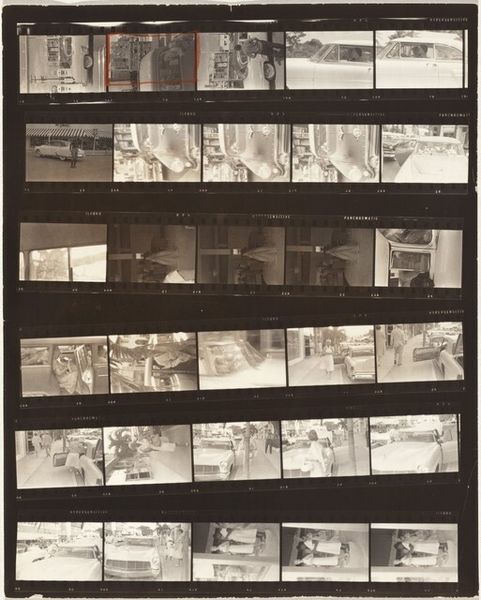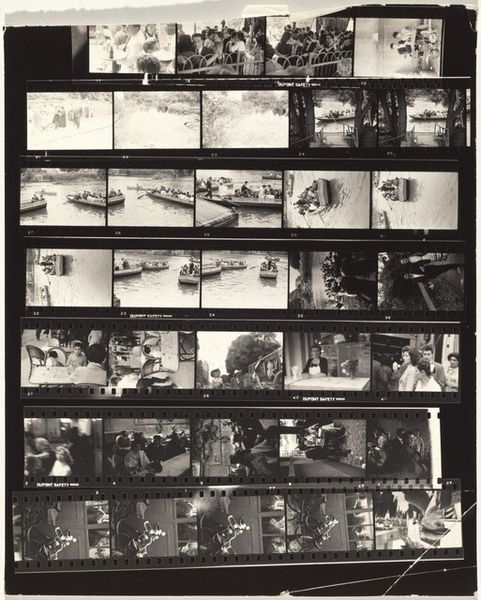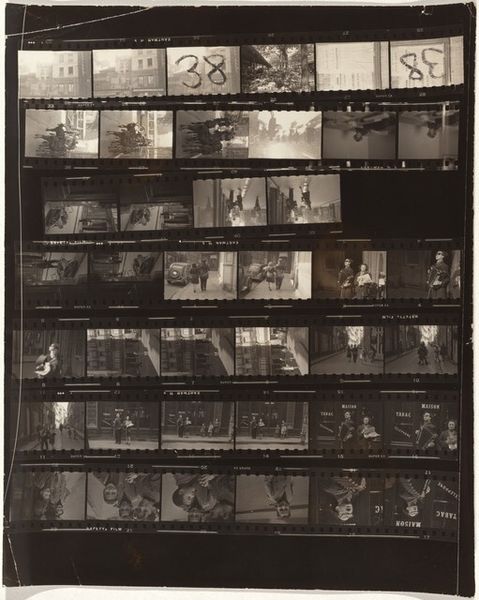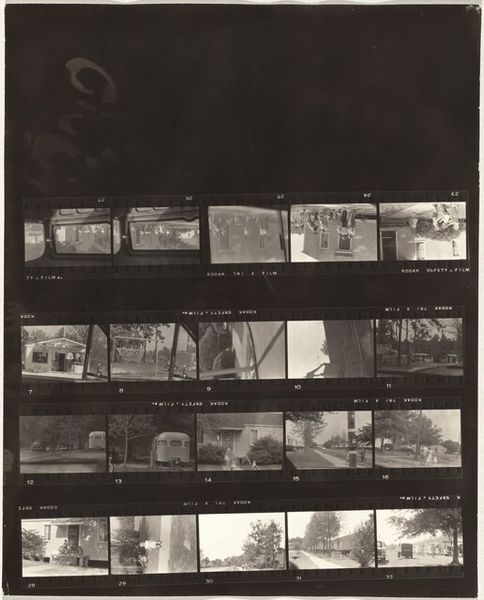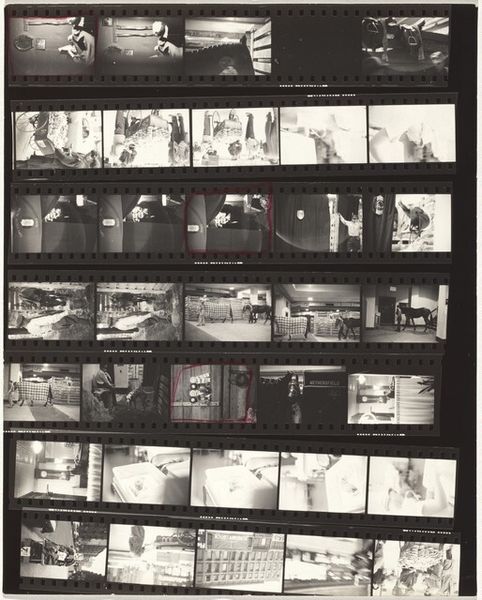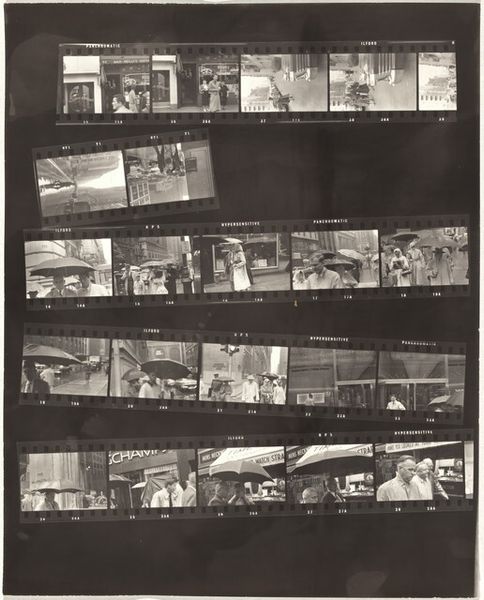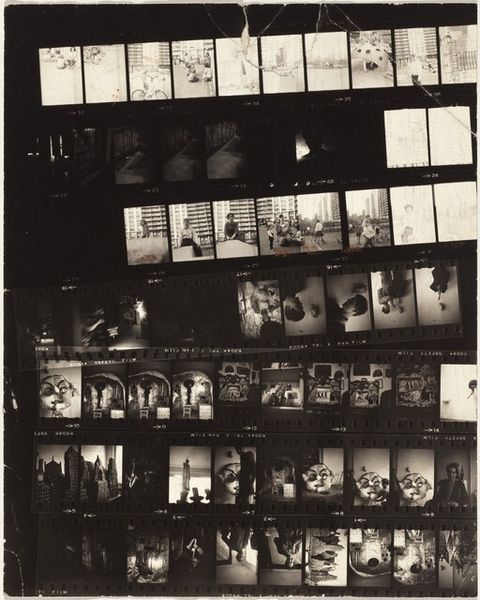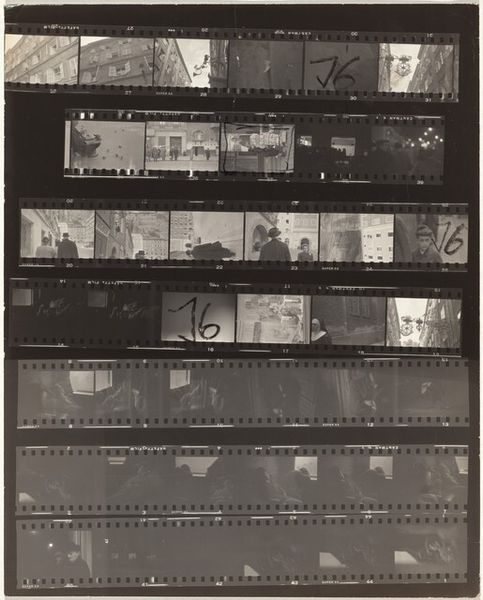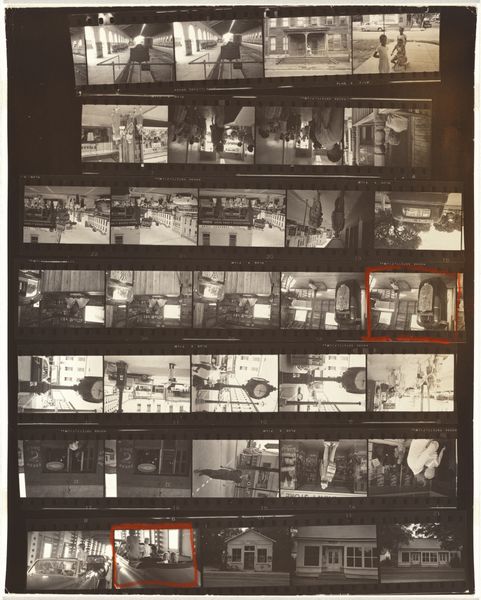
print, photography, gelatin-silver-print
#
film photography
# print
#
street-photography
#
photography
#
gelatin-silver-print
#
film
#
realism
Dimensions: overall: 29.7 x 23.9 cm (11 11/16 x 9 7/16 in.)
Copyright: National Gallery of Art: CC0 1.0
Curator: Here we have Robert Frank’s “Paris 36A”, a gelatin silver print dating from 1949 to 1950. The piece showcases the contact sheet of a 35mm film roll. Editor: It strikes me as quite raw. Seeing the whole strip with its imperfections—the scratches, the frame numbers—it really highlights the materiality of analogue photography. Curator: Precisely! Notice how Frank presents the sequence. The arrangement invites us to decode the narrative through its composition. Each frame functions almost like a still from a film. Editor: Right. And I'm thinking about the darkroom processes involved: the careful development of the film, the selection of specific frames for printing, the final presentation. All these manual processes add layers of meaning, don't they? Curator: Indeed. There is an intriguing play of light and shadow, which directs our attention. It invites a semiotic reading of Parisian life, decoded via the specific arrangements of shapes, forms, and tonalities. Editor: It is like uncovering the behind-the-scenes labor of documentary photography. I can imagine Frank on the streets, capturing these moments and then meticulously crafting them in his darkroom. Also, I am struck by how the frame functions both as image and object here. Curator: And yet, it’s not just about technique. Note the serial nature of the strip. One can intuit his thought process, as he considers his subjects from a diversity of positions. We gain insight into the photographer’s compositional intentions. Editor: Yes, exactly. The materiality emphasizes a crucial element: time. You get the sense of real moments documented in this temporal order. I find this very revealing about the social context he found himself within. Curator: This is why “Paris 36A” endures, I think. It's an exploration of both photographic form and also the artist's compositional strategy in depicting reality. Editor: Absolutely, a reminder that even what looks spontaneous has undergone many layers of intervention. I leave with a newfound appreciation of process and the tangible labor that precedes an image.
Comments
No comments
Be the first to comment and join the conversation on the ultimate creative platform.
